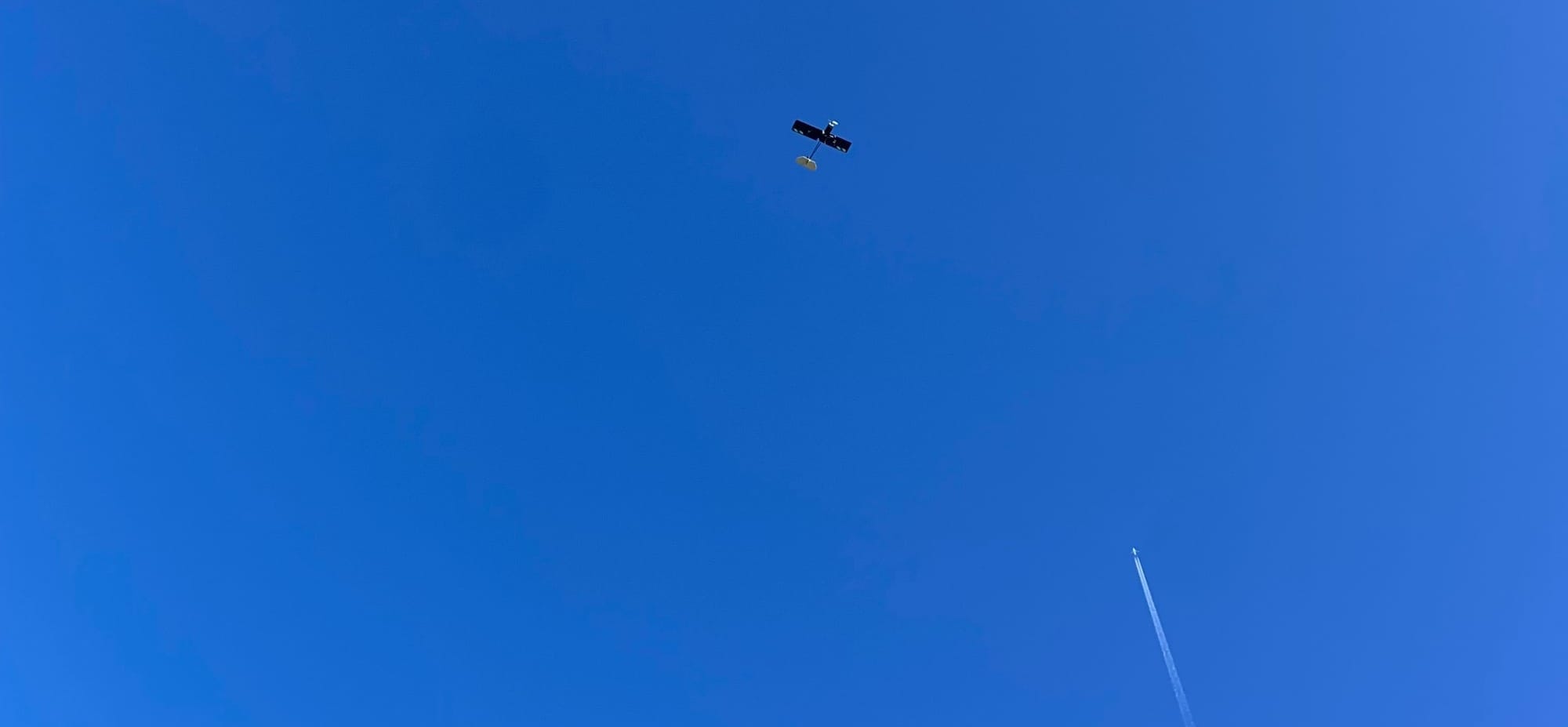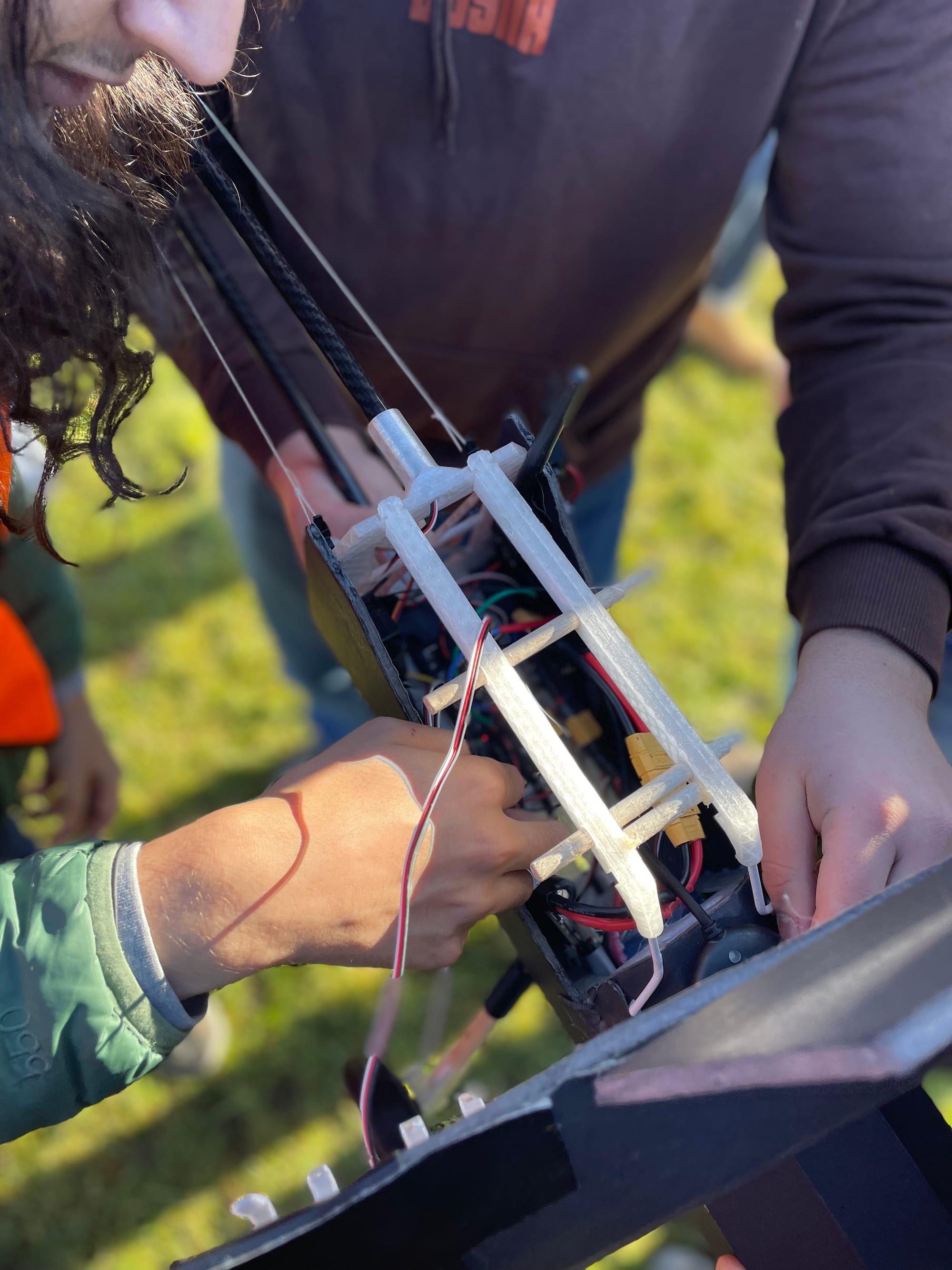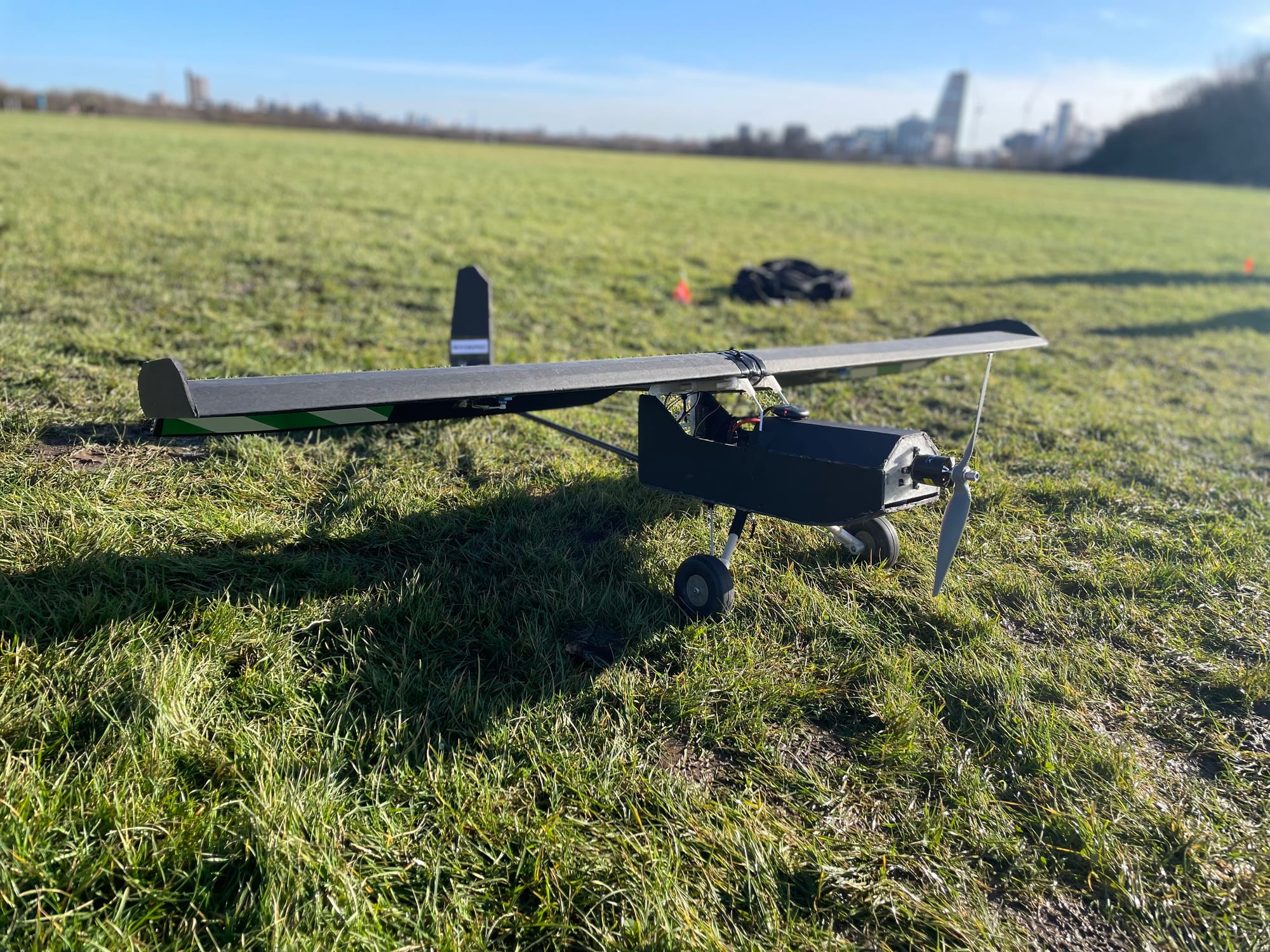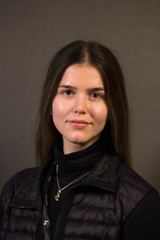Aerial underdogs triumph in auto-pilot test flight
Imperial College Aerial Vehicle’s Solar Plane Initiative tested their autopilot system as a stepping stone to beat ETH Zurich’s 81-hour record.

Imperial College Aerial Vehicle’s (ICAV) newest solar team tested their lightweight airplane’s autonomous piloting system last Saturday the 25th January in Wormwood Scrubs. The plane autonomously navigated a waypoint mission, a task completed without electrical or mechanical failure, demonstrating the capabilities of the autopilot system. This was a valuable stepping stone towards their end goal of breaking the sub-50kg flight endurance record currently held by a similar student society at ETH Zurich. This record currently stands at 81.5 hours.
This test flight made use of a testbed model aeroplane, which was built using components recycled from other aircraft from ICAV’s past. The team, a subset of the ICAV, consists of 20 engineering students from the EEE, Aeronautical and Mechanical Engineering Departments, who meet two to four hours a week to work on designing, simulating , testing, and eventually manufacturing a solar-powered plane.
The plane was made of light foamboard, sturdy carbon fibre rods, and bolsa wooden struts. Special components were 3D printed at minimal cost. The flight controller was provided by the well-established parent society, reducing a significant cost for the underdog team. CAD Simulations of the structure and frame endurance were completed by Oscar Coret, a second-year Aeronautical engineering student, on multiple software sysems to provide a robust analysis.
At the site in Wormwood scrubs, London’s only drone and plane flight site for hobbiest, Hisham Khatib, a second year EEE engineering student and electronics lead, began constructing the plane with every other team member huddled around and ready to provide aid. The batteries and camera were placed and connected, the 1.5m wide wing was ziptied to the ceiling of the structure, and the propellor was bolted onto the front motor.

The plane was ready to fly. “Get up to attitude and start off the mission”, Suhail reported. Team members, wearing high vis-jackets, built a safety perimeter before the plane lifted off. Once the plane successfuly circled on auto-pilot for a few minutes and the team was satisfied, yelling out “Success!” and cheering, a rough landing on the heavy mud opened up discussions.
During the deconstruction, the team reflected on the successful flight, noticing that the plane flew well despite a twisted tail, slight winds and bad launching conditions. Next up for the team will be manufacturing a similarly size solar-powered aircraft, as to investigate the viability of the powertrain system that they’re developing.

Suhail is hopeful for the team’s next venture. This test flight was the second of four planned tests, a significant uptake to the usual once-a-year test flight, allowing the team to test and refine their airframes frequently.
However, the team is limited to compact funds, which Suhail is currently expanding by reaching out to external sponsors, such as component manufacturers.
The team shared that as they push the boundaries of their teams potential, they find satisfication in applying their education in power systems, stability and modelling software to their cause.

